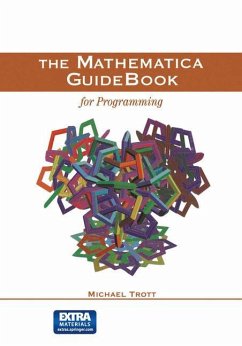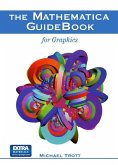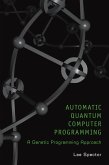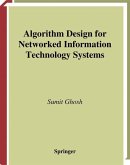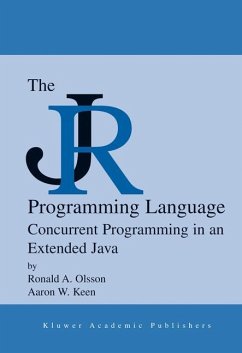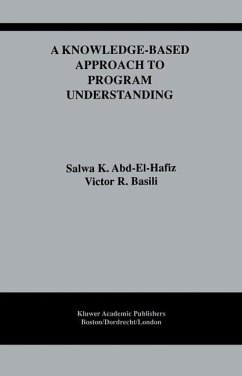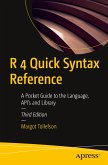Mathematica is today's most advanced technical computing system. It features a rich programming environment, two-and three-dimensional graphics capabilities and hundreds of sophisticated, powerful programming and mathematical functions using state-of-the-art algorithms. Combined with a user-friendly interface, and a complete mathematical typesetting system, Mathematica offers an intuitive, easy-to-handle environment of great power and utility.
The Mathematica Guidebook for Programming provides a comprehensive, step-by-step development of Mathematica programming capabilities and contains an enormous collection of examples and worked exercises. It guides the reader to become fluent in the structure of Mathematica expressions, expression evaluation, pure and named functions, and in procedural, rule-based, and functional programming constructs. Each Mathematica function is discussed in detail, explained in numerous examples. The programs for this book are available to download at the link below:
http://extras.springer.com
Unique Features:
_ Step-by-step presentation of Mathematica functions assuming no prior Mathematica programming experience
_ Clear organization, complete topic coverage, and an accessible writing style for both novices and experts
_ Detailed discussion of procedural, rule-based, and functional programming
_ Hundreds of worked examples, illustrations, programs, and fully worked self-study exercises for understanding concepts and learning how to solve real-life problems
_ Website for book with additional materials:
http://www.MathematicaGuideBooks.org
Michael Trott is a symbolic computation and computer graphics expert. He holds a Ph.D. in theoretical physics and joined the R&D team at Wolfram Research in 1994, the creators of Mathematica. Since 1998, he has been leading development of the Wolfram Functions Site http://functions.wolfram.com, which currently features more that 80,000 formulas and identities, and thousands of visualizations.
The Mathematica Guidebook for Programming provides a comprehensive, step-by-step development of Mathematica programming capabilities and contains an enormous collection of examples and worked exercises. It guides the reader to become fluent in the structure of Mathematica expressions, expression evaluation, pure and named functions, and in procedural, rule-based, and functional programming constructs. Each Mathematica function is discussed in detail, explained in numerous examples. The programs for this book are available to download at the link below:
http://extras.springer.com
Unique Features:
_ Step-by-step presentation of Mathematica functions assuming no prior Mathematica programming experience
_ Clear organization, complete topic coverage, and an accessible writing style for both novices and experts
_ Detailed discussion of procedural, rule-based, and functional programming
_ Hundreds of worked examples, illustrations, programs, and fully worked self-study exercises for understanding concepts and learning how to solve real-life problems
_ Website for book with additional materials:
http://www.MathematicaGuideBooks.org
Michael Trott is a symbolic computation and computer graphics expert. He holds a Ph.D. in theoretical physics and joined the R&D team at Wolfram Research in 1994, the creators of Mathematica. Since 1998, he has been leading development of the Wolfram Functions Site http://functions.wolfram.com, which currently features more that 80,000 formulas and identities, and thousands of visualizations.
From the reviews:
"This volume is the first one in a series of four books on the Mathematica programming language. It is best suited for those who ... want to learn the sophisticated tricks of the advanced programming and to use Mathematica up to its full capacity. ... The book addresses many features of human-computer interaction. ... This book is one of the most valuable sources for the advanced users of Mathematica. ... all the science/engineering/computer science/mathematics libraries should have this book and its companion volumes." (Matti Vuorinen, Zentralblatt MATH, Vol. 1080, 2006)
"The Mathematica GuideBook for Programming provided this reviewer with insights into solving and visualizing problems by using Mathematica ... . Its wealth of exercises, annotated solutions and integrated bibliographic references should make this set a valuable part of the library of any Mathematica user. I highly recommend it." (Marvin Schaefer, MathDL, August, 2006)
"On the whole, the programming GuideBook provides a comprehensive, step-by-step development of Mathematica programming capabilities and contains an impressive collection of examples and worked exercises. Key Mathematica functions are discussed in detail, using interesting examples and put to the test in real programs." (Willy Hereman, SIAM Review, Vol. 47 (4), 2005)
"This volume is the first one in a series of four books on the Mathematica programming language. It is best suited for those who ... want to learn the sophisticated tricks of the advanced programming and to use Mathematica up to its full capacity. ... The book addresses many features of human-computer interaction. ... This book is one of the most valuable sources for the advanced users of Mathematica. ... all the science/engineering/computer science/mathematics libraries should have this book and its companion volumes." (Matti Vuorinen, Zentralblatt MATH, Vol. 1080, 2006)
"The Mathematica GuideBook for Programming provided this reviewer with insights into solving and visualizing problems by using Mathematica ... . Its wealth of exercises, annotated solutions and integrated bibliographic references should make this set a valuable part of the library of any Mathematica user. I highly recommend it." (Marvin Schaefer, MathDL, August, 2006)
"On the whole, the programming GuideBook provides a comprehensive, step-by-step development of Mathematica programming capabilities and contains an impressive collection of examples and worked exercises. Key Mathematica functions are discussed in detail, using interesting examples and put to the test in real programs." (Willy Hereman, SIAM Review, Vol. 47 (4), 2005)

